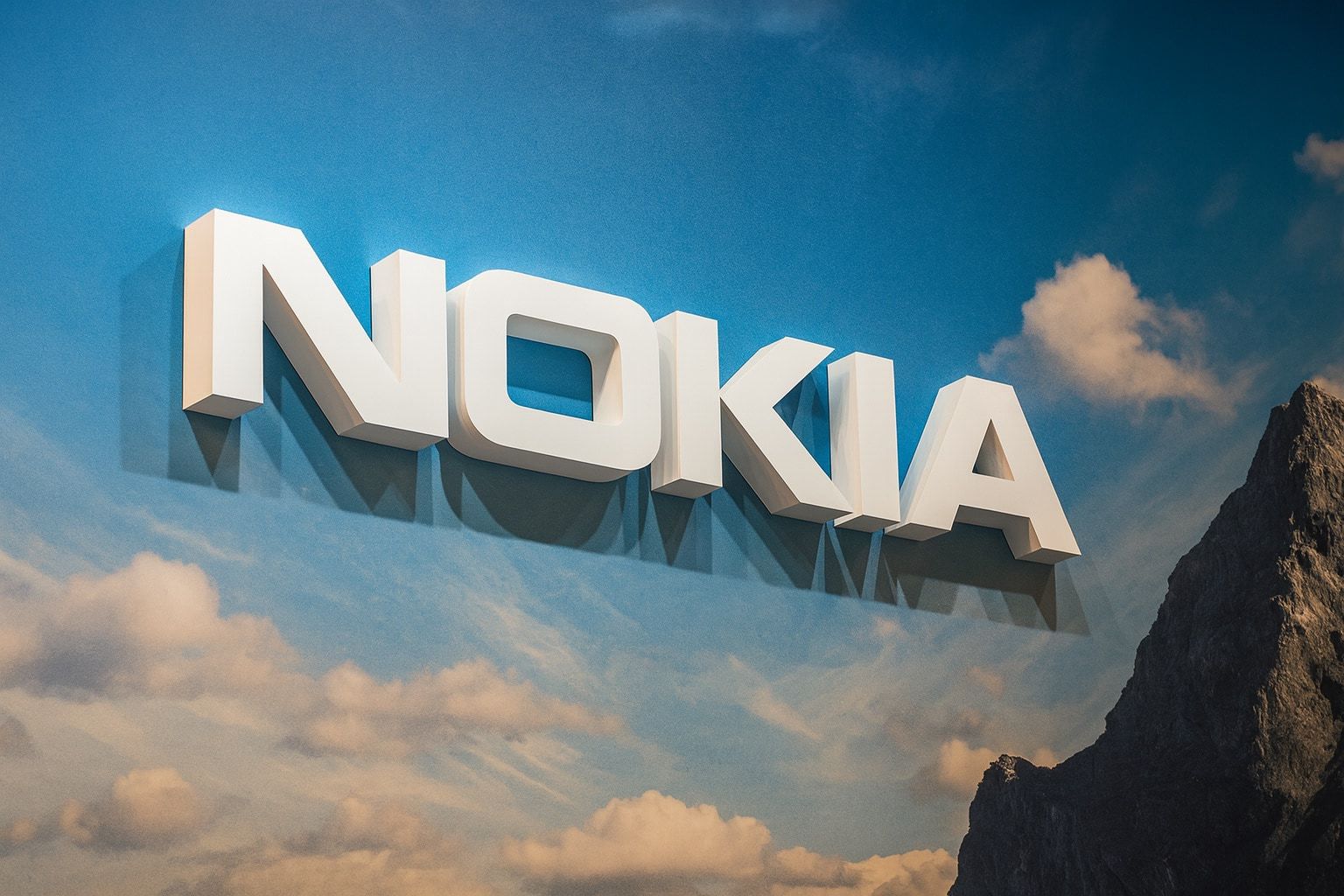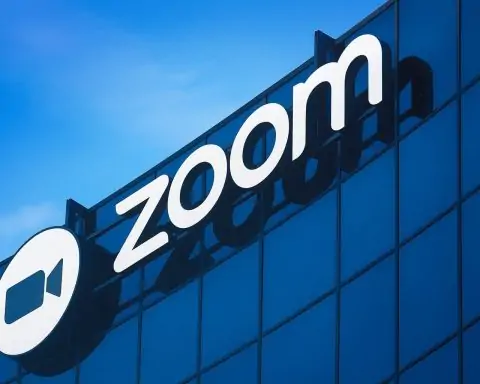- Big Contracts & Earnings Beat: Nokia’s shares hit multi-year highs after Q3 results showed sales +12% YoY and rising demand for AI/cloud networking [1]. The rally was fueled by new 5G deals (Vodafone/Vodacom, UK carriers, Rakuten Japan, Elisa Finland, etc.) [2] and a £2 billion UK rollout after the Vodafone–Three merger. Nokia also signed a 5-year network upgrade deal with energy giant E.ON, aiming to modernize its grid communications [3] (using IP routing, optical transport and automated networks), which Nokia says will halve E.ON’s network energy use [4].
- Nvidia Partnership: On Oct. 28 Nokia announced that chipmaker NVIDIA will pay $1.0 billion to buy about 2.9% of Nokia (166.4 M new shares at $6.01 each) as part of a strategic AI networking partnership [5]. The deal includes collaborative development of AI-enhanced 5G/6G radio software and data-center networking. Nokia plans to use the proceeds to advance its AI and connectivity roadmap [6].
- AI Supercycle: CEO Justin Hotard and other executives say AI is driving Nokia’s outlook. Hotard told Reuters, “I fundamentally think we’re at the front end of an AI supercycle, much like the 1990s with the internet” [7]. He added that “AI and data center demand continues to be robust. In fact, it continues to accelerate from our perspective” [8]. Nokia reports ~6% of sales from AI/cloud clients (14% of its infrastructure revenue), with optical network sales up 19% YoY [9].
- Analyst Upgrades: Wall Street analysts have turned increasingly bullish. Jefferies upgraded Nokia to “Buy” (from Hold), lifting its 12-month target to €6.60 from €4.50 [10], citing the pivot toward AI-driven data center business. JP Morgan maintained an “Overweight” rating and raised its target to $7.10 [11]. UBS raised its target to €5.40 (from €4.10) but kept a Neutral rating [12]. Many see full-year 2025 EPS around €0.34–0.36, suggesting the current ~$6+ stock price already reflects modest growth [13] [14].
- Stock Performance: Nokia (NYSE: NOK) closed around $6.36 on Oct. 27 [15], up ~14% year-to-date. The October rally is even stronger – Nokia ADRs climbed about 20% in the past month [16]. The stock now trades roughly at 28× forward earnings and yields ~3%. Analysts’ consensus remains a “Moderate Buy” (average target mid-$5s) [17], reflecting cautious optimism.
Q3 Results and 5G Deal Windfall
Nokia’s Q3 2025 earnings (reported Oct 23) exceeded expectations and set off the recent rally. Revenue rose to €4.83 billion (up ~12% YoY) [18], driven by strength in its Optical Networks and Cloud & Network Services segments. Comparable operating profit hit €435 million [19], well above analysts’ €342 million estimate. Management raised its full-year operating profit guidance to €1.7–2.2 billion (from up to €2.1 B) [20].
Investors cheered not just the beat, but the context of Nokia’s strategic moves. Major 5G network contracts announced in October bolstered confidence. For example, Nokia extended a 5G rollout partnership with Vodafone/Vodacom across Europe and Africa, and won a £2 billion contract (with Ericsson) to upgrade ~7,000 UK sites following the Vodafone–Three merger [21]. It also secured a “green” 5G network deal in Japan (with Rakuten Mobile) and expanded a network modernization with Finland’s Elisa [22]. These wins helped push Nokia’s New York shares to their highest levels since 2022 [23].
Meanwhile, Nokia moved into new verticals. A notable example is the deal with E.ON (announced Oct 28), in which Nokia will modernize E.ON’s utility telecom infrastructure across Europe [24]. Using Nokia’s advanced IP routing, optical transport and automation technology, the project is designed to create a highly efficient “smart grid” network. Nokia says the upgrade will “reduce energy consumption by around 50%” versus the current system [25]. Eleftherios Papadopoulos, Nokia’s Managing Director in Germany, emphasized the scope: “What sets this project apart is the ability to deliver across all key domains as a single vendor…[it] perfectly positions us to enable E.ON to digitize its grids in Germany.” [26].
These contract wins have swelled Nokia’s order backlog and demonstrated the company’s shift from legacy telecom gear to newer 5G and optical solutions. As TechStock² analyst Marcin Frąckiewicz notes, “Nokia announced major telecom deals that boosted investor optimism,” helping the stock surge roughly 14% in early October [27] [28].
AI, Optical and Cloud: The New Growth Engines
Under CEO Justin Hotard (formerly at Intel), Nokia is aggressively integrating AI and cloud into its products. The $2.3 billion acquisition of Infinera (completed earlier in 2025) has given Nokia a leading position in high-speed optical networking for data centers. Analysts at Jefferies point out that Nokia is shifting “from a predominantly Radio Access Network–centric business struggling for growth, to one where rising AI data center exposure … is expected to drive steady growth.” [29].
The Q3 results support this thesis. Nokia reports that roughly 6% of group sales now come from AI and cloud customers (14% of its infrastructure revenue) [30]. Its Optical Networks division (which serves data center clients) grew 19% year-over-year in constant currency, and the book-to-bill ratio is above 1. Jefferies notes that 29% of Q3 optical revenue came from data-center clients, and Nokia has begun shipping new 800G optical transceivers to a major U.S. hyperscaler [31]. Nokia was also chosen by data-center network operator Nscale as a preferred partner across its optical and IP networking.
Hotard and team have also started weaving AI into radio access networks. In early October, Nokia licensed Hewlett-Packard Enterprise’s AI-driven RAN controller software and even hired some HPE developers to integrate it into Nokia’s portfolio. The goal is to automate and optimize next-generation 5G/6G networks. Hotard says these trends are “very favourable” long-term. As he told Reuters: “Even if there’s a bubble [in AI], a trough, we’ll look to the longer-term trends. And right now, all those trends are very favourable.” [32]
Overall the picture is one of a transformation: Nokia’s traditional mobile networks sales (its core business) have been flat or down, but its fixed/optical networks are booming on the AI and cloud supercycle. The Jefferies team expects Nokia’s gross margins to climb as the mix shifts (they forecast gross margins of 45–46% by 2026–27 [33]). They and others project company-wide revenue growth of 5–6% in 2026–27, driven by a roughly 25% surge in optical sales and mid-single-digit growth in IP routing [34] [35].
Nvidia Takes a Stake: “Building Trusted AI Connectivity”
In a blockbuster announcement on Oct. 28, Nokia said NVIDIA Corporation will invest $1.0 billion by subscribing to 166.4 million new Nokia shares (at $6.01 each) – roughly a 2.9% stake [36]. This strategic partnership is explicitly focused on “shaping and leading the AI-RAN market” and advancing data-center networking. Nokia will accelerate development of its 5G/6G radio software on NVIDIA’s GPU architecture, and integrate its data-center switching and optical tech into NVIDIA’s AI infrastructure plans [37]. Nokia president and CEO Justin Hotard and CFO Marco Wirén will detail the collaboration on an Oct. 28 conference call.
The deal was well-received. By pricing at $6.01 per share, it implicitly valued Nokia above its recent trading levels, giving shareholders near-immediate value. Nokia management said it obtained independent financial advice to ensure fairness. In effect, NVIDIA’s cash infusion provides Nokia with funding to push its 5G and AI strategy, while NVIDIA gains a key telecom partner for its AI vision. As Nokia noted, the $1.0B will be used to “accelerate its strategic plans to advance trusted connectivity for the AI supercycle” [38].
On Oct. 28, European media reported AMD was also in talks for investments (though nothing official yet). For now, the strong NVIDIA tie-up stands out as a vote of confidence from the chipmaker that dominates AI hardware.
Wall Street’s Take: Upgrades and High Targets
Analysts have reacted by raising forecasts. After the Q3 results and contract wins, Jefferies analyst Janardan Menon upgraded Nokia to “Buy” (from Hold) and hiked the 12-month price target to €6.60 (from €4.50) [39]. Jefferies sees Nokia’s network infrastructure business growing steadily and its margins improving, which could re-rate the stock higher. Meanwhile, JP Morgan’s Sandeep Deshpande maintained an “Overweight” rating and raised his target to $7.10 (from $6.00) [40]. He notes Nokia is benefiting from broader exposure to AI-driven demand. Northland Capital also reiterated an Outperform with a $7.50 target [41] (pointing out 19% optical growth on par with industry leader Ciena).
Not all are wildly bullish. UBS upgraded Nokia’s target to €5.40 (from €4.10) on Oct 28, but left a Neutral rating [42], warning that telecom capex could moderate. Deutsche Bank has lifted its target to about €4.75 and kept a Buy rating, reflecting more confidence in Nokia’s outlook. Overall, the consensus rating is around Moderate Buy, with average targets roughly in the mid-$5s (Nokia closed near $6.36 on Oct. 27 [43]).
In the short term, traders note the stock may be technical overbought after such a run-up. Ts2.Tech analyst Marcin Frąckiewicz observes Nokia’s 14-day RSI has been above 70, suggesting possible consolidation [44]. But he adds the uptrend is intact given the momentum of deals and AI buzz. In his view, Nokia is still a “show-me” story: it needs to prove that these strategic moves translate into sustained earnings growth and higher margins next year [45].
Outlook and Risks
Today’s news leaves Nokia in a strong position but with clear caveats. Positives include a diversified revenue base (wireless, fixed networks, software, IP licensing, services), a ~3% dividend yield, and a solid balance sheet (debt/equity ~0.2) [46]. The company has beaten estimates ~75% of the time in recent years and is investing heavily in growth areas. Government and defense networks may also provide tailwinds – Hotard noted NATO and allied spending increases as a potential opportunity.
On the flip side, Nokia still faces margin pressures (operating margin under 4% in the quarter [47]) and stiff competition. Ericsson’s blowout Q3 results (with a big 5G win at AT&T) highlighted that Nokia is underperforming in North America [48]. China continues to limit both Nokia and Ericsson equipment, and carrier capex globally is not booming. Nokia has exited Russia due to sanctions, and it may need to continue focusing on core businesses (there are rumors of selling non-core assets). If global telecom spending stagnates, Nokia could face headwinds despite its transformation.
Bottom line: Investors are cautiously optimistic. Nokia enters this period with strong momentum – a string of new contracts, robust AI/data center demand, and fresh capital from NVIDIA. As one Wall Street note put it, Nokia is transitioning toward higher-growth AI/optical markets (boosting forecasts), but the stock is only fairly valued if the growth story plays out [49] [50]. In the coming weeks, focus will be on the Oct 28 call details, and on Nokia’s Nov 19 Capital Markets Day (when CEO Hotard is expected to outline long-term strategy). For now, most analysts see the risk/reward as balanced around the current levels: any continuation of the rally would need more proof of revenue and margin expansion, while a pullback would likely test Nokia’s bullish thesis that AI and 5G will power its future growth.
Sources: Company press releases and earnings filings; Reuters News (via MarketScreener) [51] [52]; TechStock² (ts2.tech) analysis [53] [54]; Investing.com [55]; GuruFocus [56]; Nokia and E.ON press releases [57]; QuiverQuant (via JP Morgan data) [58]; additional financial media reports. All price and financial data as of late Oct 27–28, 2025.
References
1. sa.marketscreener.com, 2. ts2.tech, 3. www.finanznachrichten.de, 4. www.finanznachrichten.de, 5. www.globenewswire.com, 6. www.globenewswire.com, 7. www.reuters.com, 8. sa.marketscreener.com, 9. sa.marketscreener.com, 10. www.investing.com, 11. www.gurufocus.com, 12. sa.marketscreener.com, 13. ts2.tech, 14. www.investing.com, 15. www.finanznachrichten.de, 16. ts2.tech, 17. ts2.tech, 18. sa.marketscreener.com, 19. sa.marketscreener.com, 20. sa.marketscreener.com, 21. ts2.tech, 22. ts2.tech, 23. sa.marketscreener.com, 24. www.finanznachrichten.de, 25. www.finanznachrichten.de, 26. www.finanznachrichten.de, 27. ts2.tech, 28. ts2.tech, 29. intellectia.ai, 30. sa.marketscreener.com, 31. www.investing.com, 32. www.reuters.com, 33. www.investing.com, 34. www.investing.com, 35. www.investing.com, 36. www.globenewswire.com, 37. www.globenewswire.com, 38. www.globenewswire.com, 39. www.investing.com, 40. www.gurufocus.com, 41. intellectia.ai, 42. sa.marketscreener.com, 43. www.finanznachrichten.de, 44. ts2.tech, 45. ts2.tech, 46. ts2.tech, 47. ts2.tech, 48. ts2.tech, 49. www.investing.com, 50. www.gurufocus.com, 51. sa.marketscreener.com, 52. www.reuters.com, 53. ts2.tech, 54. ts2.tech, 55. www.investing.com, 56. www.gurufocus.com, 57. www.finanznachrichten.de, 58. www.quiverquant.com








